#tim considine
Text






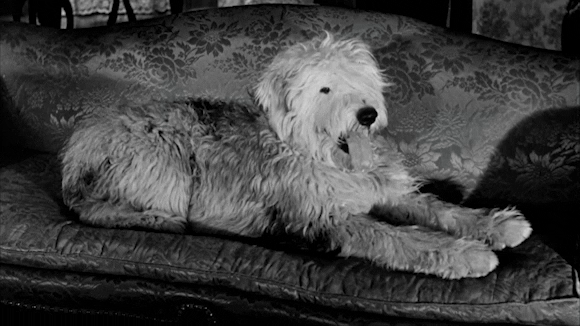
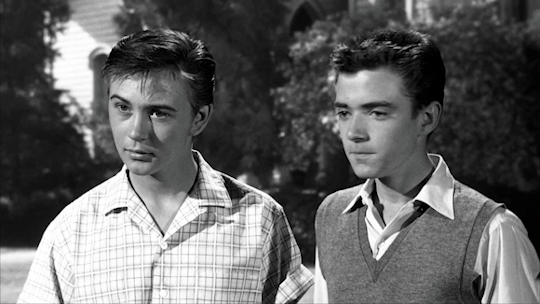
THE SHAGGY DOG (1959) dir. Charles Barton
#the shaggy dog#wilby daniels#tommy kirk#fred macmurray#kevin corcoran#tim considine#walt disney#filmedit#1959#50s
24 notes
·
View notes
Text

Tim Considine-Jane Greer "The clown" 1953, de Robert Z. Leonard.
8 notes
·
View notes
Text

6 notes
·
View notes
Text
"THE SUSPICIONS OF MR. WHICHER: THE MURDER ON ANGEL LANE" (2013) Review

"THE SUSPICIONS OF MR. WHICHER: THE MURDER ON ANGEL LANE" (2013) Review
Over a decade ago, the ITV network aired a television adaptation of Kate Summerscale's 2008 true life crime book, "The Suspicions of Mr. Whicher or The Murder at Road Hill House", starring Paddy Considine. The movie proved to be such a success that producer Mark Redhead had followed up with three other television productions featuring the main character, Jack Whicher. The first of these sequels was 2013's "THE SUSPICIONS OF MR. WHICHER: THE MURDER ON ANGEL LANE".
The 2013 television movie began with Jack Whicher coming to the aid of a wealthy middle-age woman, when a young thief snatches her purse inside a London pub in London. After retrieving her purse, Whicher discovers that the woman, Susan Spencer, is searching for her missing niece, a 16 year-old girl named Mary Drew. Miss Spencer learns of Whicher's old position as a police detective and hires him to find the missing girl. Whicher eventually discovers Mary's brutally murdered body inside the police morgue. Both eventually learn that before her death, Mary had given birth to a child and someone had stolen a family heirloom from her. Miss Spencer hires Whicher to act as her private consultant and find Mary's killer.
When I first saw "THE MURDER ON ANGEL LANE", I had assumed the story began sometime after the events of 2011's "THE SUSPICIONS OF MR. WHICHER: THE MURDER AT ROAD HOUSE HILL". It took a rewatch of this second television movie for me to realize that it was set during the events of the 2011 movie - sometime between the four or five years between Mr. Whicher's failure to get the killer prosecuted for murder and the latter's eventual confession. I was able to ascertain this conclusion, due to the hostile behavior of Police Commissioner Richard Mayne toward Whicher and the one of the supporting character's comments. This setting also explained Whicher's occasional doubts regarding his skills as a detective. Now whether the other two Whicher television movies that followed were also set during this period is a matter I will eventually discover.
Unlike "THE MURDER AT ROAD HOUSE HILL", "THE MURDER ON ANGEL LANE" proved to be a genuine "whodunnit" story. This particular case was not some true crime narrative. And Whicher did not discover the antagonist's identity until the finale act. I am not saying that this particular difference made the 2013 television movie an improvement over the first one. But in a way, it felt a little refreshing to view a murder mystery/period drama, instead of a mere true life case set in the far past. "THE MURDER ON ANGEL LANE" started as an investigation into the disappearance of a well-born adolescent managed to transform into a lot more. Like "THE MURDER AT ROAD HOUSE HILL", this story also proved to be a family drama beset with murder, betrayal and corruption. But unlike the 2011 movie, greed also play a major role in "THE MURDER ON ANGEL LANE". I thought screenwriter Neil McKay and director Christopher Menaul handled the movie's narrative very well, with a minor exception or two. I also admired how McKay used the unresolved events of THE MURDER AT ROAD HOUSE HILL" to not only provide the Whicher character as an emotional obstacle for him to overcome, but also an excuse to place him in the dangerous situation that he found himself in the movie's final act.
I do have a few complaints about the plot for "THE MURDER IN ANGEL LANE". And it centers around a small group of quibbles regarding the television movie's final act. Whicher's investigation led him to a third visit at an insane asylum, where he found himself incarcerated as a patient. A part of me felt relieved that this particular scenario lasted less than five minutes. However, another part of me found this sequence rushed and contrived for it did not take Whicher long to receive help in making his escape. Following on the heels of the asylum sequence, Whicher finally confronted the murderer. But he did so alone . . . and without contacting his old friend, Chief Inspector Adolphus "Dolly" Williamson or other members of the Metropolitan Police. I understand why Neil McKay had written the confrontation scene this way. I simply found it implausible and wish he could have created another way to close the case.
I certainly had no complaints about the movie's production values. David Roger returned to the "MR. WHICHER" series to serve as production designer. As he did for "THE MURDER AT ROAD HOUSE HILL", Roger managed to re-create the look and style of early 1860s Britain with the additional work of Paul Ghirardani's art direction and the set decorations of Jo Kornstein, who had also worked on the "ROAD HOUSE HILL" production. Only in this production, his vision extended to the streets of London. Tim Palmer served as the film's cinematographer. I thought he did a solid job, but his work did not exactly blow my mind. Lucinda Wright also returned to serve as the movie's costume designer. As she did for the 2011 television movie, her work for "THE MURDER ON ANGEL LANE" perfectly recaptured the early-to-mid 1860s without being either shoddy or over-the-top.
Paddy Considine returned to reprise his role as Jack Whicher. As he had done in the first movie, the actor did an excellent job of quietly capturing the character's reserve nature, intelligence and skill for criminal investigation. However, Considine managed to add an extra touch of poignancy, as he project Whicher's occasional bouts of insecurity in the wake over the Road House Hill case and his minor failures during his investigation of this case. Both William Beck and Tim Piggott-Smith reprised their roles as "Dolly" Williamson and Commissioner Mayne from from the first film. Like Considine, both actors gave first-rate performances. And both added extra touches to their performances - especially in their characters' attitudes toward Whicher - in the wake of the Road House Hill debacle. Olivia Colman provided the movie's emotional center as the well-born Susan Spencer, who hired Whicher to first, find her niece Mary Drew and later, find the latter's killer. She and Considine, who had co-starred in the 2007 comedy, "HOT FUZZ", worked very well together. Shaun Dingwall gave a very subtle performance as Inspector George Lock, the main investigator of Mary's murder and the only one willing to give him a chance in helping the police. The television movie also featured solid performances from Mark Bazeley, Alistair Petrie, Billy Postlewaite, Angela Terence, Justine Mitchell, Sean Baker, Sam Barnard, Christopher Harper and Paul Longely.
Of the four "MR. WHICHER" television movies, I must admit that "THE SUSPICIONS OF MR. WHICHER: THE MURDER ON ANGEL LANE" is my least favorite. I believe the last fifteen to twenty minutes had been marred by some contrived writing that I believe had rushed the narrative's pacing. However, I still believe it was a first-rate production in which screenwriter Neil McKay had created an intriguing whodunnit involving a major family feud, betrayal and greed. And director Christopher Menaul, along with a talented cast led by Paddy Considine had skillfully conveyed McKay's story to the screen.
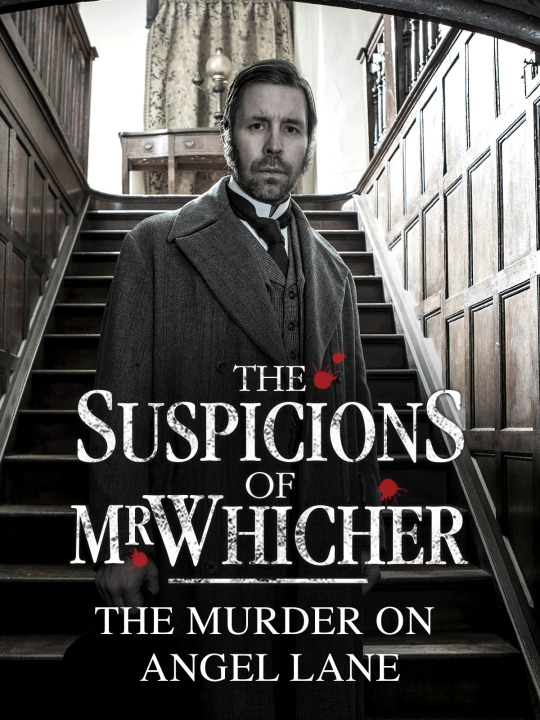
#kate summerscale#neil mckay#christopher menaul#jack whicher#the suspicions of mr. whicher#the suspicions of mr. whicher: the murder on angel lane#paddy considine#olivia colman#william beck#shaun dingwall#alistair petrie#victorian age#tim piggott-smith#justin edwards#billy postlethwaite#siobahn o'neill#mark bazeley#angela terence#justine mitchell#sean baker#sam bernard#christine harper#paul longely#road house hill#costume drama#period drama#period dramas
2 notes
·
View notes
Text
My serotonin
#in all seriousness#this is a really enjoyable serial#corny but very sweet and earnest#i'm always a sucker for innocent slice-of-life stories that feature romance#i also love tim considine in everything he's in#spin and marty is objectively a much better serial#but all of annette is available in decent quality on yt#s1 of spin and marty is on disney+ tho so if you have disney+#i'd highly recommend watching it#link#annette
0 notes
Text

Here’s my mom getting an autograph from Tim Considine at the Carnation Plaza Gardens. Did you know he was married at one time to Charlotte Stewart aka Betty Briggs? I just learned that today💙🌹🦉☕️
16 notes
·
View notes
Text


Throwback ten years ago today, April 4th, 2013, Eddie was photographed by Tim Cole at a reception for the British Film Industry held by Queen Elizabeth & Prince Philip, in Berkshire, England.
#eddie redmayne#eddieredmayne#redmayne#british film#throwback#les miserables#april 4th#2013#old photoshoot
7 notes
·
View notes
Text
Cine: Pride (2014)

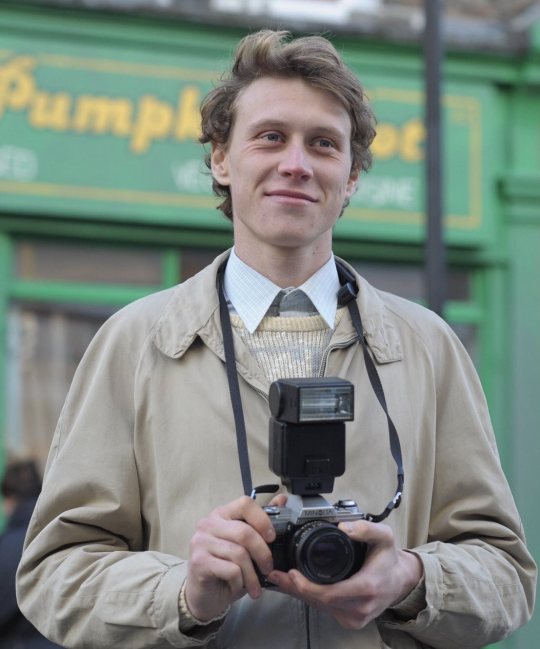

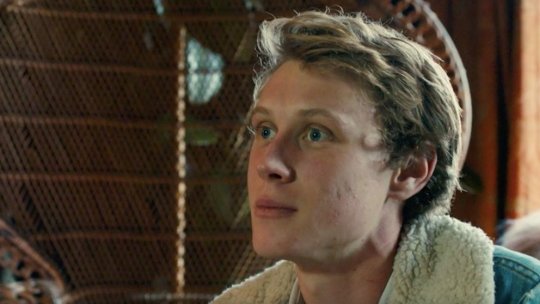
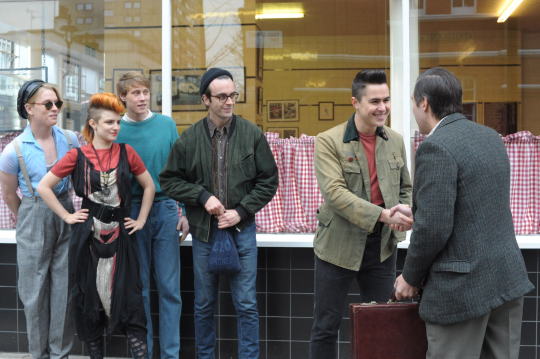
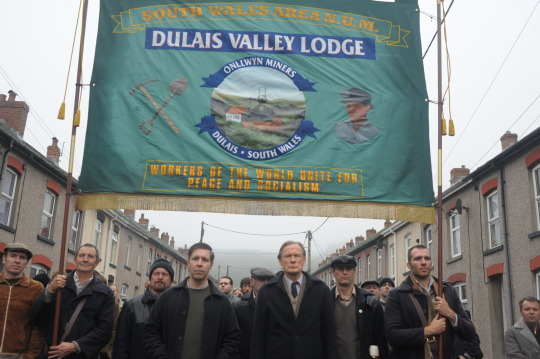
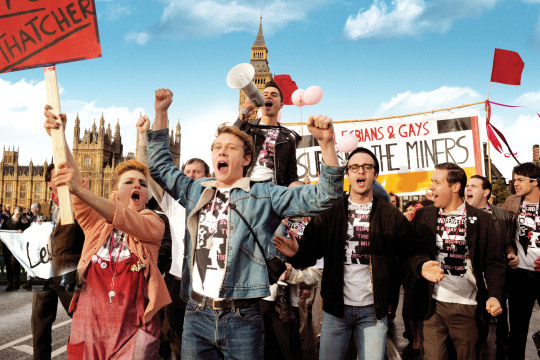
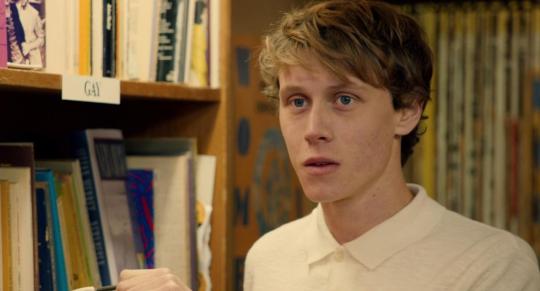

“La vida es lo que te ocurre mientras estás ocupado haciendo otros planes“. Esta certera definición de John Lennon se aplica a Joe (George Mackay), un joven que acaba de cumplir veinte años y se cruza en una Marcha del Orgullo Gay en 1984 mientras iba camino a la Universidad a sus clases de Hotelería. El destino le tiene preparada una sorpresa cuando se une a LGSM (Lesbians and Gays Support the Miners), una organización surgida para ayudar monetariamente a los mineros por la compleja y extensa huelga desarrollada por entonces en Gran Bretaña.
Acostumbrados a ser menospreciados, un día se topan con la sorpresa de que su generosidad es aceptada en una comunidad minera de Gales y que uno de esos mineros, Dai (Paddy Considine), irá en persona a agradecerles y, lo que es aún más inédito, a invitarles a visitar Onllwyn. Y allí van Mark Ashton (Ben Schnetzer), Mike (Joseph Gilgun), Jonathan Blake (segunda persona diagnosticada en Reino Unido con el virus de HIV, interpretada por Dominic West), Gethin Roberts (Andrew Scott), Jeff Cole (Freddie Fox), Reggie Blennerhassett (Chris Overton), Ray Aller, (Joshua Hill) y Faye Marsay (Steph), con todos los temores a flor de piel porque la experiencia les despierta todas las alarmas. Claro que se encuentran con miradas de desconfianza y hasta de desprecio, pero la aventura les resulta enriquecedora: hallan aceptación e incluso son escuchados cuando son necesarias las cuestiones legales a la hora de enfrentarse a los abusos policiales.
Dirigida por Matthew Warchus y basada en una historia real, todo está aquí muy bien dosificado: el retrato de la militancia LGTBQ de principios de los ochenta, la intensa lucha de los mineros y de sus familias, la precaución por un para nada improbable ataque homófobo, la amenaza latente del sida y, en especial, el contraste entre ambos mundos, cargado de inquietudes, pero también de maravillosos momentos de ternura mutua, camaradería y humor del bueno. Regalo de los protagonistas ya mencionados, pero también de un reparto fantástico que incluye a Imelda Staunton (la deliciosa Hefina Headon), Jessica Gunning (Siân James), Lisa Palfrey (Maureen Barry), Liz White (Margaret Donovan), Nia Gwynne (Gail Pritchard), Menna Trussler (Gwen), Bill Nighy (Cliff Barry) y Russell Tovey (Tim), entre otros talentos. Imprescindible es poco.
youtube
#cine#Pride#2014#BasadoEnHechosReales#gay#adolescencia#GeorgeMackay#LGSM#mineros#huelga#GranBretaña#PaddyConsidine#MarkAshton#BenSchnetzer#JosephGilgun#JonathanBlake#DominicWest#AndrewScott#FreddieFox#ChrisOverton#JoshuaHill#FayeMarsay#ImeldaStaunton#JessicaGunning#LisaPalfrey#LizWhite#NiaGwynne#MennaTrussler#BillNighy#RussellTovey
3 notes
·
View notes
Text
Antonio Velardo shares: Tim Baltz on How B.J. Grabbed a Win in ‘The Righteous Gemstones’ by Austin Considine
By Austin Considine
Sunday’s episode was a test for Baltz’s character, but B.J. seized the moment. Still, his victory came at a price.
Published: July 16, 2023 at 10:35PM
from NYT Arts https://ift.tt/CniAPKd
via IFTTT

View On WordPress
0 notes
Photo

17 notes
·
View notes
Text

#Tim Considine#1950s#Spin and Marty#Disney kid#Teen idol#MMC#rest in peace#RIP#Child Actor#My Three Sons#Cowboy Hat
22 notes
·
View notes
Text








THE HARDY BOYS
The Mystery of the Applegate Treasure (1956): An Introduction / The Mystery of Ghost Farm (1957): An Introduction
#the hardy boys#frank hardy#joe hardy#tim considine#tommy kirk#mickey mouse club#walt disney#50s#*i know this won't get any notes but tommy is so great
14 notes
·
View notes
Text

Tim Considine-Annette Funicello "El extraño caso de Wilby" (The shaggy dog) 1959, de Charles Barton.
6 notes
·
View notes
Photo

Joni Mitchell photographed by Tim Considine.
121 notes
·
View notes
Text
"THE SUSPICIONS OF MR. WHICHER: THE MURDER AT ROAD HILL HOUSE" (2011) Review
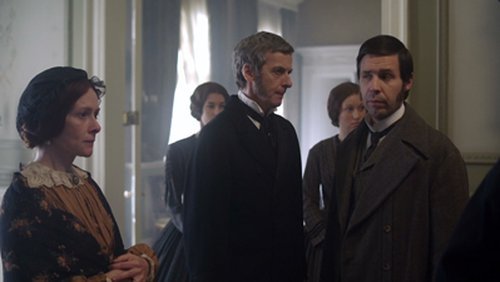
"THE SUSPICIONS OF MR. WHICHER: THE MURDER AT ROAD HILL HOUSE" (2011) Review
Roughly five years ago, a relative of mine had suggested I watch a BBC television movie about a Victorian-era murder story. Although it aired on the Amazon Prime Video streaming channel (and still does to this day), I had assumed it was a documentary. To my surprise, it turned out to be a television movie called "THE SUSPICIONS OF MR. WHICHER: THE MURDER AT ROAD HILL HOUSE".
Before watching the movie, I had quickly discovered that the production was an adaptation of Kate Summerscale's 2008 non-fiction book, "The Suspicions of Mr. Whicher or The Murder at Road Hill House", winner of Britain's Samuel Johnson Prize for Non-Fiction for that year. Hence, the reason why I had initially assumed this was a documentary. The book was an account of the real-life murder of three year-old Francis Saville Kent in 1860 Wiltshire. Francis, the three year-old son of a "Factory Commissioner" for the Home Office named Samuel Saville Kent, was found murdered on the Road Hill House estate in Wiltshire, leased by his father. The child's nursemaid, Elizabeth Gough, had announced his disappearance. Two estate hands eventually found Francis' body inside a privy-house, with knife wounds on his chest and hands, and his throat deeply slashed. Outrage over the brutal murder of a prominent man's child, Scotland Yard had dispatched Detective Inspector Jack Whicher to solve the case.
Whicher's assignment to the case proved to be a godsend for Gough, who immediately fell under the suspicions of Police Superintendent John Foley of nearby Trowbridge. The latter would have pressed for her arrest if Whicher had not cleared her of any further suspicions. However, the Scotland Yard detective's suspicions rested on another member of the household, namely Kent's sixteen year-old daughter, Constance Emily Kent. Whicher also began to suspect Constance's brother, fifteen year-old William Saville Kent. The detective believed Constance (with her brother's help) had sought revenge against their former nanny, Mary Pratt Kent, who had married their father following the death of their mother. There had been suspicions that Kent and his second wife had an affair during his marriage to Constance and William's mother. Since young Francis had been conceived during their father's second marriage, Whicher suspected Constance or both of them of murdering the three year-old boy.
"THE SUSPICIONS OF MR. WHICHER: THE MURDER AT ROAD HILL HOUSE" did not strike me one of the most fascinating murder mysteries I have seen on film or television. This did not surprise me, considering the television movie proved to be more of a fictionalized account of an actual case that had been solved over 160 years ago. I would say "THE MURDER AT ROAD HILL HOUSE" was more of a historical drama or a "true life" crime movie than a murder mystery. After all, it did not take the protagonist very long to produce a believable suspect, halfway into the narrative. The movie eventually became a mental tug-of-war between Whicher and Constance, in which the former struggled to convince the latter to confess to the murder. At the same time, Whicher and his close friend and colleague, Adolphus "Dolly" Williamson, raced to find physical evidence to support his suspicions. Despite their success in discovering hard evidence against Constance, the pair's efforts ended up being stymied or sabotaged by Superintendent Foley, head of the local police. Not only did Foley resented an outsider becoming the lead investigator in the Kent case, he seemed offended that any working-class man would accuse the sixteen year-old daughter of a respectable, middle-class citizen like Samuel Kent, of murder. What made this even worse for Whicher is that many of the locals and the media seemed to share Foley's class bias.
I have to give kudos for the movie's production values. I believe David Roger's production designs really captured the look and style of 1860s Britain. And I believe he did so without being either extravagant or cheap. Roger's work was ably assisted by Jo Kornstein's set decorations, Kate Evenden's art direction and Matt Gray's photography. Lucinda Wright's costume designs managed to perfectly captured Roger's balanced look for the movie's setting. Were her costumes accurate for 1860s Britain? I honestly cannot say so. Regardless of accuracy, I do believe Wright's costumes managed to perfectly captured the essence of the movie's characters across both gender and class.
"THE SUSPICIONS OF MR. WHICHER: THE MURDER AT ROAD HILL HOUSE" featured some solid performances. At least from the supporting cast. Performers like William Beck, Emma Fielding, Kate O'Flynn, Tim Piggott-Smith, Ben Miles, Donald Sumpter, Charlie Hiett, Julian Firth, Sarah Ridgeway and Antony Byrne all gave competent and solid performances. However, I believe a few did give what I consider to be the movie's best performances. Naturally, I felt Paddy Considine was sensational as the solid, yet intelligent Jack Whicher. I thought he did a superb job of conveying Whicher's growing frustration of the impediments that made his investigation to reach a successful conclusion. Equally sensational was Alexandra Roach, who gave an enigmatic and skillful performance as the cool and supercilious Constance Kent. Peter Capaldi's portrayal of Constance's father, Samuel Savill Kent, struck me as surprisingly complex and ambiguous. Capaldi did a great job of conveying hints that the public's suspicions of his character might be justified. I also found myself very impressed by Tom Georgeson's performance as the narrow-minded Superintendent Foley. The actor did an excellent job of portraying his character's class bigotry and resentment toward Whicher's role in the investigation.
As murder mysteries go, "THE SUSPICIONS OF MR. WHICHER: THE MURDER AT ROAD HILL HOUSE" seemed like an ineffectual effort. When the main protagonist manages to discover the true culprit halfway into the production, it seems a waste of time to label the movie as a murder mystery. However, "THE SUSPICIONS OF MR. WHICHER: THE MURDER AT ROAD HILL HOUSE" proved to be a very effective and well-done historical drama about a famous murder case, thanks to a skillful direction from James Hawes, a first-rate adaptation written by Neil McKay and superb performances from a cast led by Paddy Considine. As a fictionalized account of a famous true crime, the television movie proved to be quite fascinating.

#kate summerscale#the suspicions of mr. whicher#the suspicions of mr. whicher: the murder at road house hill#jack whicher#paddy considine#constance kent#alexandra roach#peter capaldi#emma fielding#william beck#tom georgeson#kate o'flynn#true crimes#victorian age#ben miles#charlie hiett#julian firth#tim piggott-smith#period drama#period dramas#costume drama
1 note
·
View note
Text
Sorry that my posts are so few and far between. I think about the thewaltcrew blog a lot and still check my activity all the time. But I'm just so bad at time management and am currently busy with other projects at the moment. Each of my posts on thewaltcrew take a lot of time to do, and I'm bad at making the time to work on a post a little at a time.
But meanwhile, here are just some random thoughts/updates:
I just found out about this Walt's People series by Didion Ghez? Which are compilations of interviews with Disney artists. I just bought two of the volumes (I specifically wanted the one with Bill Walsh and then I got one with Bill Peet, but upon reading the Bill Peet interview, I recognized it from here).
My next post (which to be completely honest, I haven't started yet) is on Mary Blair. I know the exact topic/idea I want to do but am still figuring out what the format should be.
I am still awaiting the day I can talk about my love for Tim Considine! I have plenty of other posts to make before then, but I've been watching The Champ (which is what Considine's film The Clown is a remake of), and it's rekindled my interest in him. One of these days, I will make a post either about him or one of the Disney projects he was in.
I don't understand so many of Disney's picks for Disney Legends, e.g. I feel like Jamie Lee Curtis doesn't have a deep enough connection to the company aside from Freaky Friday? (Though her father Tony Curtis was in 40 Pounds of Trouble, the first movie to receive permission from Walt to film in Disneyland!)
I rewatched Mary Poppins last week, and wow, what an amazing film. I should do a post on that one day too. Ub Iwerks' technical work on that film is fantastic, and the film as a whole incorporates so many of Disney's trades into one product (animation, live-action, and even animatronics/theme park magic).
4 notes
·
View notes